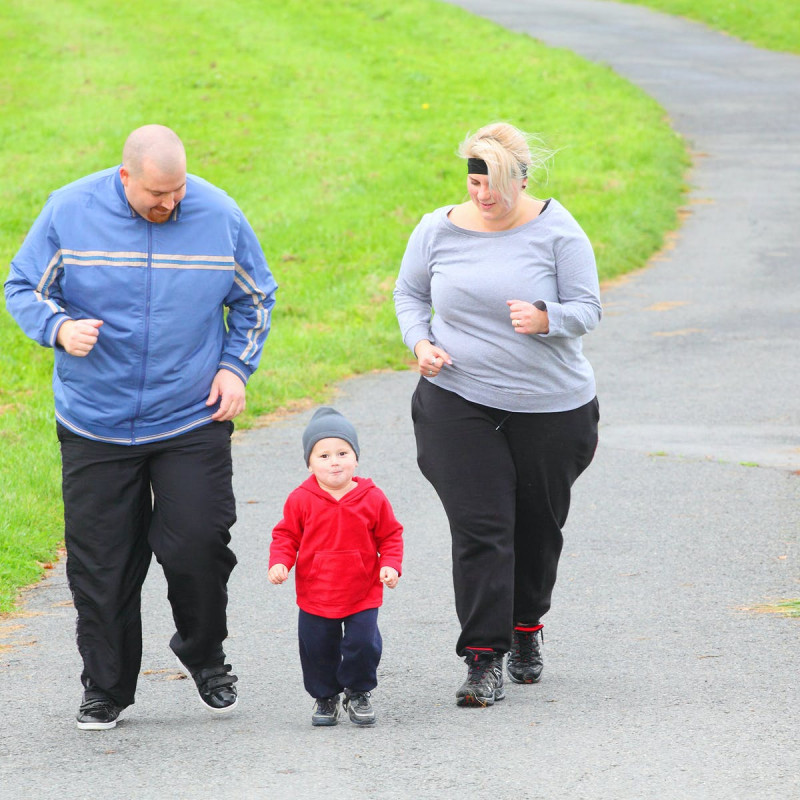
Obesity is responsible for 5 to 13% of all-cause deaths around the world.
Morbid obesity leads to many health problems due to its negative effects on endocrine system, cardiovascular system, respiratory system, gastrointestinal system, skin, genitourinary system, musculoskeletal system and psychosocial condition.
Are you obese?
Until your weight is 20% higher than it should be you are not obese. To determine you have a healthy weight you can look our graphic.
Surgical Treatment for Obesity
The aim in the treatment of obesity is to reduce obesity-related morbidity and mortality risks by targeting a realistic weight loss, making the individual gain adequate and balanced nutrition habits and increasing the quality of life. Recent advancements and experience in laparoscopic procedures, also called closed method, resulted in a significant increase in cases of gastrointestinal surgery that ensures evident and sustainable weight loss in return for low complication risks for the treatment of morbid obesity. The weight loss obtained by surgical procedures leads to total disappearance or regression of co-existing diseases in most obese patients.
OBESITY AND METABOLIC SURGERY
Although obesity is independent from diabetes, most patients with type 2 diabetes mellitus complain of excess weight. More importantly, since obesity surgery is based on the principle of modifying the digestive tract, it not only enables loss of excess weight, but it also eliminates Type 2 diabetes mellitus based on useful hormonal changes. “Obesity Surgery” is performed to enable obese patients lose weight and increase quality of life, but it is also called “Obesity and Metabolic Surgery”, as it provides a solution for metabolic disorders, such as Type 2 Diabetes Mellitus, in obese patients. “Class III obesity” refers people with BMI – body mass index is a value that estimates amount of fat in body – above 40 kg/ m2. Metabolic surgery is an appropriate treatment option for such patients and “class II obese” patients, whose body mass index is 35.0-39.9 kg/m2 and blood glucose cannot be controlled by medical treatments. Moreover, metabolic surgery becomes an option, if high blood glucose cannot be regulated by medication treatment, including oral or intramuscular drugs and BMI of the patient with Type 2 diabetes mellitus is 30-34.9 kg/m2.
Following procedures are done in our Obesity and Metabolic Surgery Department:
Laparoscopic Gastric By-pass (Roux-en-Y or Mini Gastric Bypass)
Laparoscopic Sleeve Gastrectomy (Vertical Sleeve Gastrectomy)
NON-SURGICAL TREATMENT FOR OBESITY
Intragastric Balloon
Intragastric balloon is placed with closed method (endoscopic) and it is instituted for mild obesity (overweight) and severe obesity that is not operable. Patients with no severe reflux are anesthetized and a balloon, measuring 500 to 600 cc in volume, is placed with endoscopic technique. The aim is to make the patient feel full early based on the volume effect. The FDA-approved method ensures weight loss by 10 to 15% of the body weight. This method has been proven effective in 70% of patients. Removal of the balloon may be required in patients who cannot tolerate the device (9%). The balloon is removed, again with endoscopic method, at the end of 6-month period.
Gastric Injections
Gastric nerves and muscles that regulate hunger and appetite can be inactivated by gastric method that is performed with closed (endoscopic) method or in other words without a surgical procedure. Since gastric muscles cannot contract, the stomach is emptied at longer intervals, duration of fullness prolongs, the person feels full even with small servings and thus, weight loss is facilitated. The procedure lasts approximately 15 minutes and no preparation is required. The patient is sedated for this procedure. An endoscope – a tubular device with a camera in one end – is inserted into mouth of the patient and advanced to the stomach. After the device reaches the stomach, images are acquired and appropriate medicine injected to relevant zones. The patient can be discharged within several hours following the procedure and can engage in activities of daily life. Gastric Injection yields promising results in selected patients. It is observed that patients lose 10 kg in average within several months.
The In Vitro Fertilization implies fertilizing a human oocyte with a human sperm at the laboratory settings and transferring the resultant embryo into the womb.
The robotic rehabilitation is a treatment modality used to restore the walking ability in patients with total or partial loss of the gait function. The robotic rehabilitation is an evidence-based treatment that also involves virtual reality processes.
All pre-and post-operative procedures of the kidney transplant are extremely crucial for the health of both the recipient and the donor.
The check-up examinations allows treatment of the diseases successfully before the condition progresses to the symptomatic stage, as it ensures early diagnosis of many diseases.
An aesthetic look is important for most women. Certain processes that can cause deformities in women's body can make them feel unhappy and desperate.
Breast cancer is the most common type of cancer in women not only in our country but also worldwide.
As coronavirus (COVID-19) pandemic progresses, scientists teach us more about the virus and how it progresses.